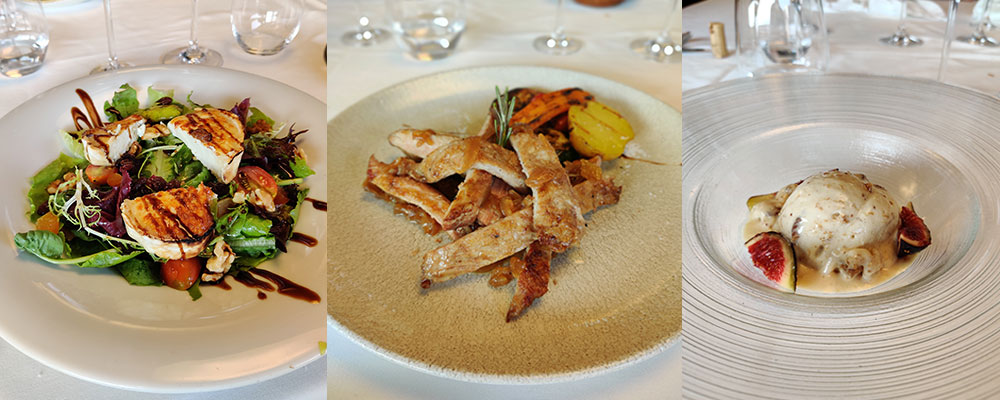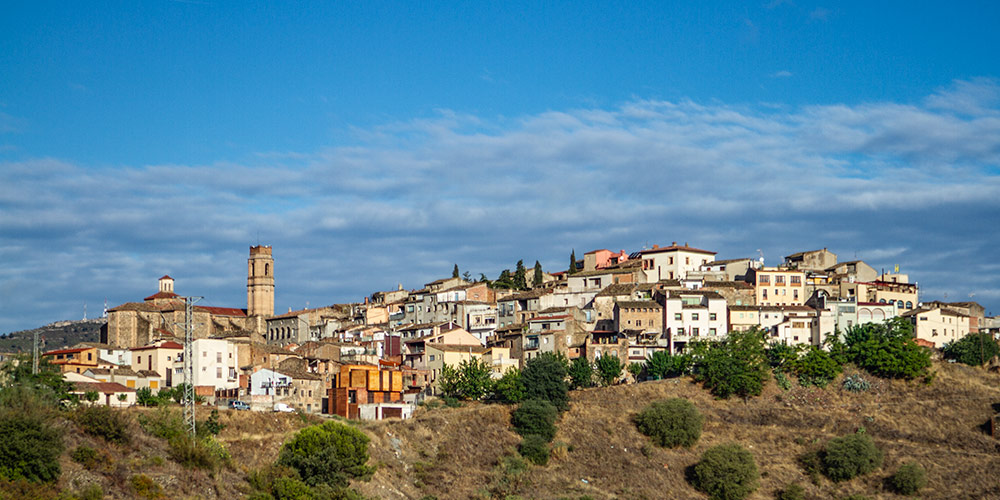I’ve been to a restaurant in Sant Gregori, Girona for several extended family meals on various days for these simple reasons: the food is quite good (see above), it’s not far-flung from civilization, and the interior is well-appointed. What ends up tossing it all into the waste bin is the service overall, but especially when it comes to the wine which all came to a head in a recent visit although a great wealth of this can be extracted to many restaurants in Spain.
It starts with the wine list. Of the 47 options for reds, 24, or just over half were from outside Catalunya with a massive emphasis on DO Ribera del Duero followed by DOC Rioja. There has been massive work to try and rectify this (known locally as Riojitis) given that Catalunya is actually the third-largest producer of wine in Spain so there is little reason to be serving wines from outside the region unless they’re notable, which most all of these, were not.
One saving grace is that there were 13 references from the nearby DO Empordà. While passable, it’s still ridiculous given that nearly all the list should have been from there in an ideal world, or even one less ideal such as France or Italy where the wine list at a restaurant is logically comprised to a vast majority of those wines produced by neighbors.
Wanting to show support for the local wines, we ordered a bottle of the 2018 l’Oratori from Martí Fabra with a sparkling to start with that was the Integral from Llopart–note that this is of course not a Cava anymore but, Corpinnat.
Both wines arrived at the same time and neither was presented to the table, but just immediately opened. The sparkling’s cork was wrestled out with the help of the server using her apron and the bottle was then tossed in an ice bucket. The server nearly broke the cork of the Oratori and then splashed some in a glass for a taste at the table which showed that the wine was actually warmer then the restaurant’s interior. While she claimed that it was because it had “just arrived”, given we were eating on a Sunday, it was plain to see that it wasn’t being stored in any kind of refrigeration and was probably right next to the kitchen. This bottle went into the same ice bucket as well to keep the sparkling company I suppose. Imagine that, having to stick a red wine in an ice bucket, inside an air-conditioned restaurant.
It was only when a fellow who I presume to be the owner came out that he realized we’d been served a cheaper wine from Llopart and not the Integral. Shockingly, he took it back and brought out the correct wine as normally in these situations, they try and convince you just to take that wine the brought by mistake so as not to eat the cost. This would have nearly been a save, but by the time we’d reached our mains, the sparkling had finally chilled to a proper serving temperature and by the time the desserts arrived, the red was tasting well.
Neither wine was served by anyone once opened and I had to go around the table, pouring which was probably for the better given the overall sloppiness of service and that I had a vested interest to not spill on my mother-in-law.
This is of course not the first time someone has complained about wine service at a restaurant in Spain. I doubt if it would even be less than the 1000th as it’s such a common practice, especially along the coast (where cheap red wines are served at nearly freezer temperature to hide flaws) that it almost seems common practice. I bring it up however as everything was easily avoidable. The Cava and the Oratori could have easily been stored in proper refrigeration. The server had clearly never been shown how to open a bottle of wine and if someone had simply demonstrated once that the corkscrew needs to fully go into the cork so that you don’t break it or that you keep your hand on the cork of a sparkling while opening it, that would all be solved.
At several points, I asked what was happening with the service and the answer was the typical, “I’m just an employee”. So, it’s easy to see that there’s rarely any investment on the part of employees to be better unless there’s the threat of losing the job which, if the restaurant gave a damn, they would hold over their heads.
But this lack of attention, cheapness and lack of training to the wine service, despite 200-250% markup says much about the restaurant. Despite the plates arriving (late) and looking good, it makes me wonder what’s happening in the kitchen and what they’re potentially hiding there.
In essence, bad wine service can completely unwind an entire meal, leaving the diner dismayed and, as in the case of my group, vowing that we will never return. What is most frustrating in Spain is that nothing seems to change on this front and while you can cross one restaurant off your list for these offenses, the next one you go to will probably be much the same. It’s no wonder I find myself eating in more often than not…
You’re reading a free article on Hudin.com.
Please consider subscribing to support independent journalism and get access to regional wine reports as well as insider information on the wine world.




